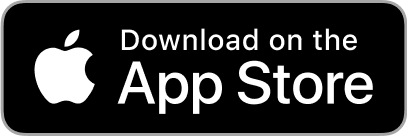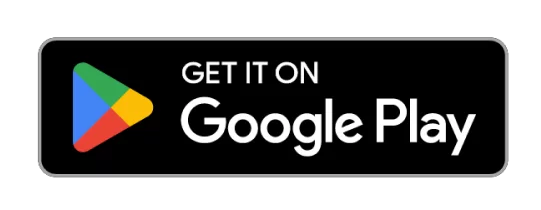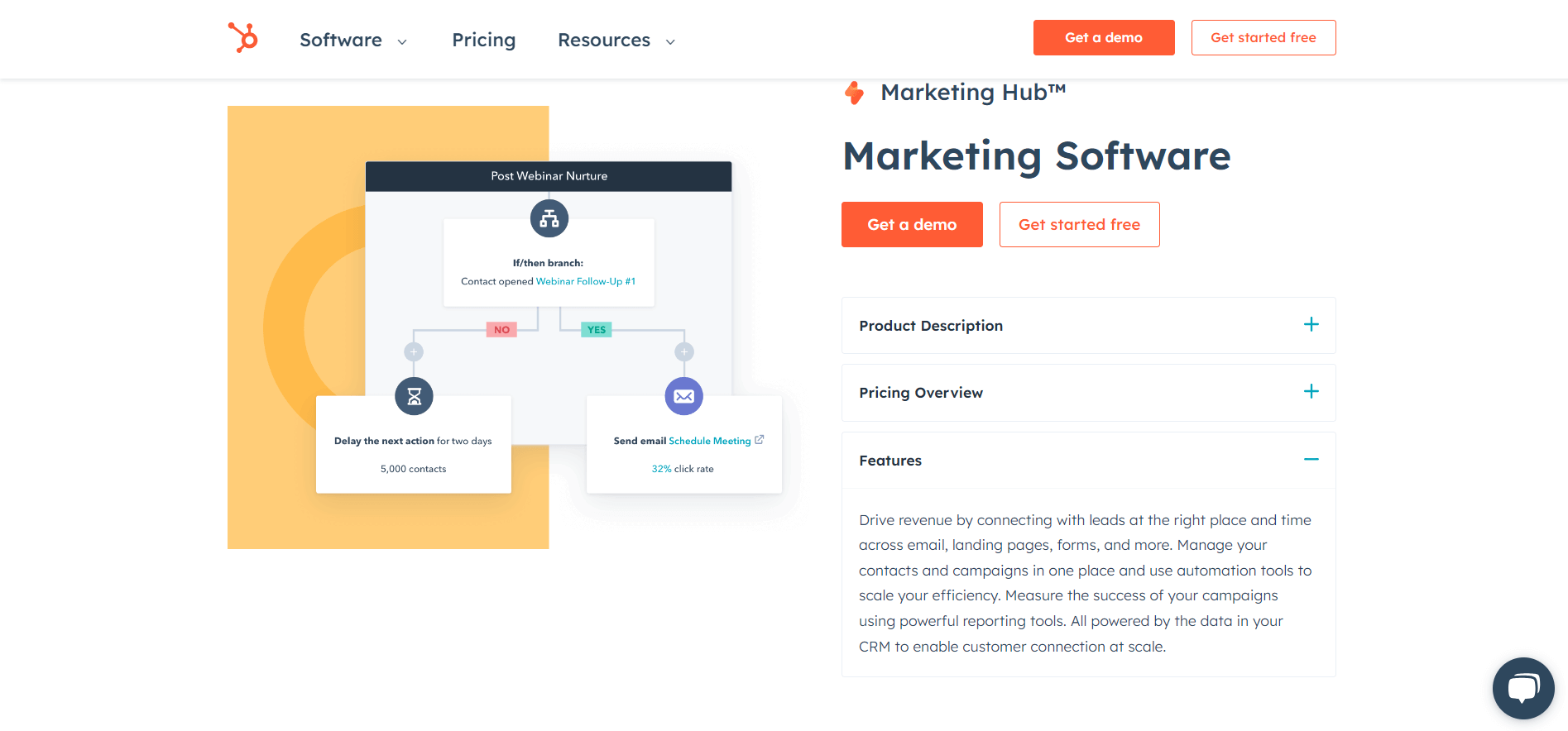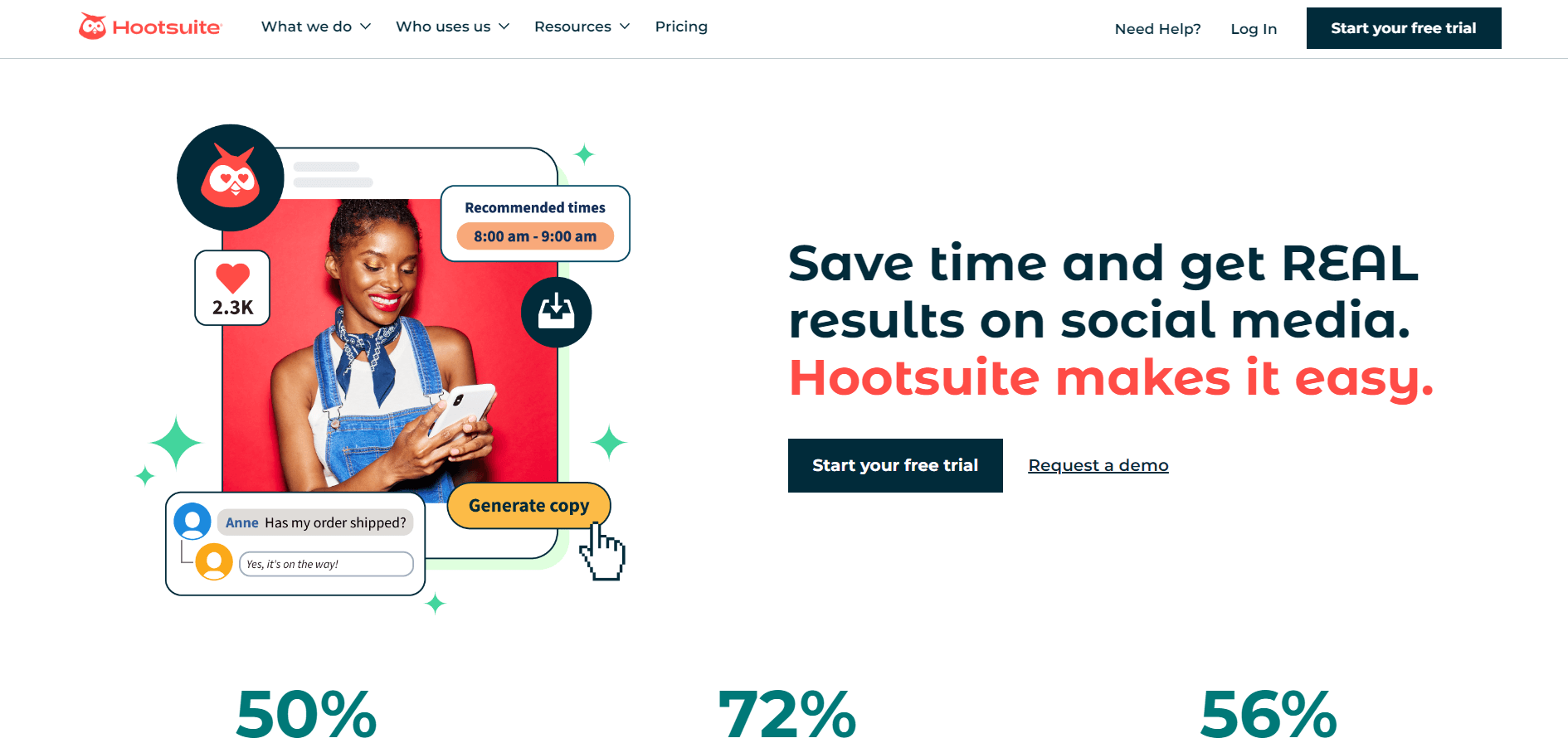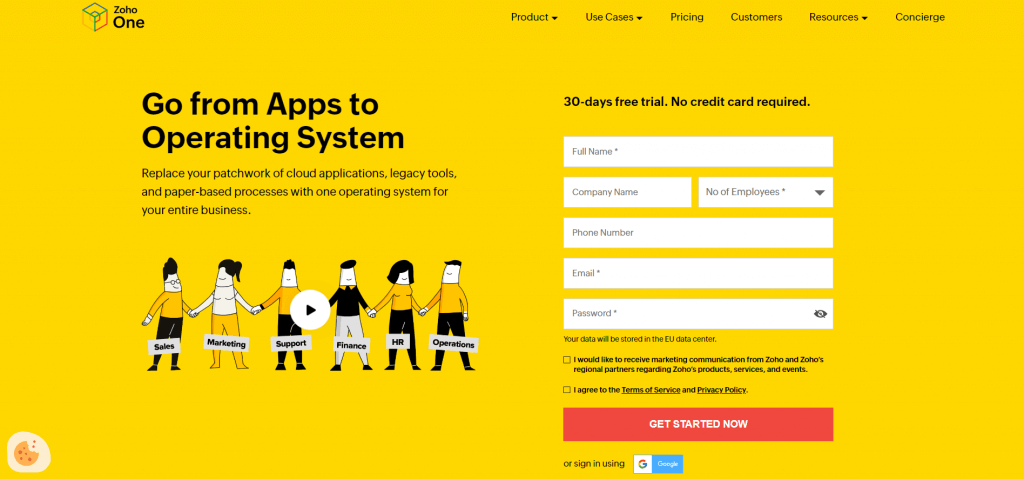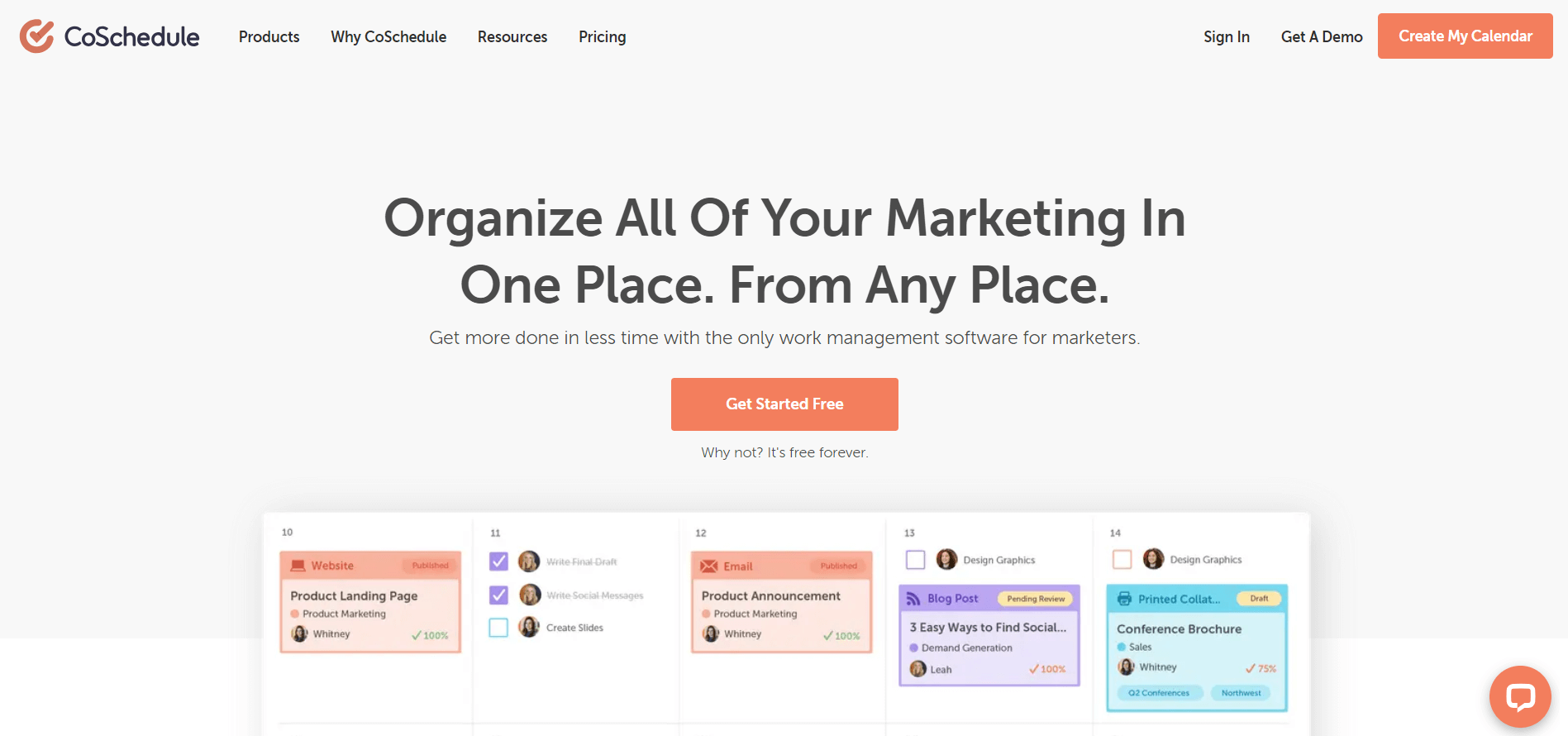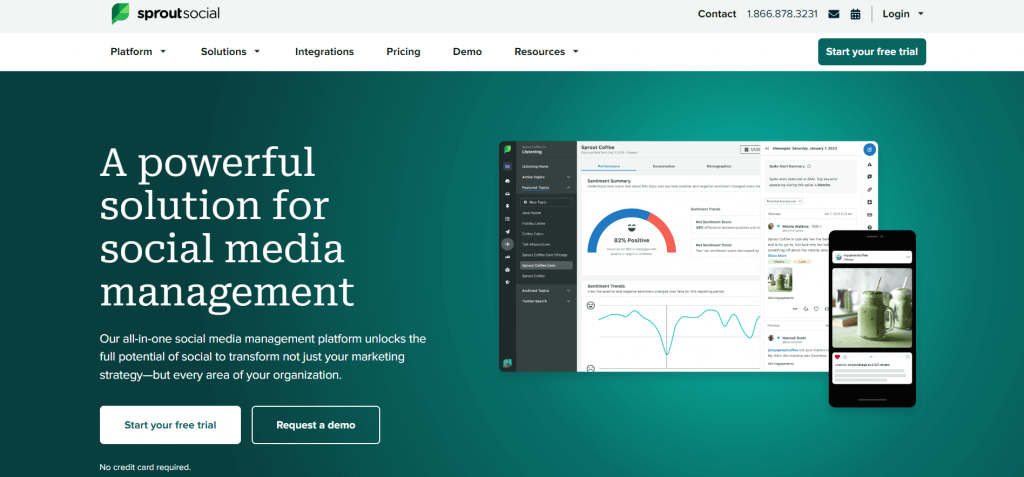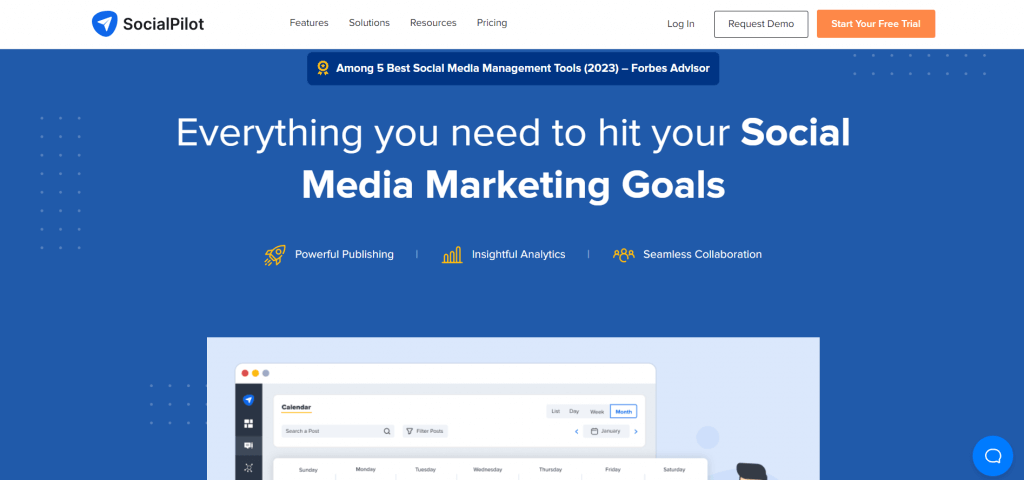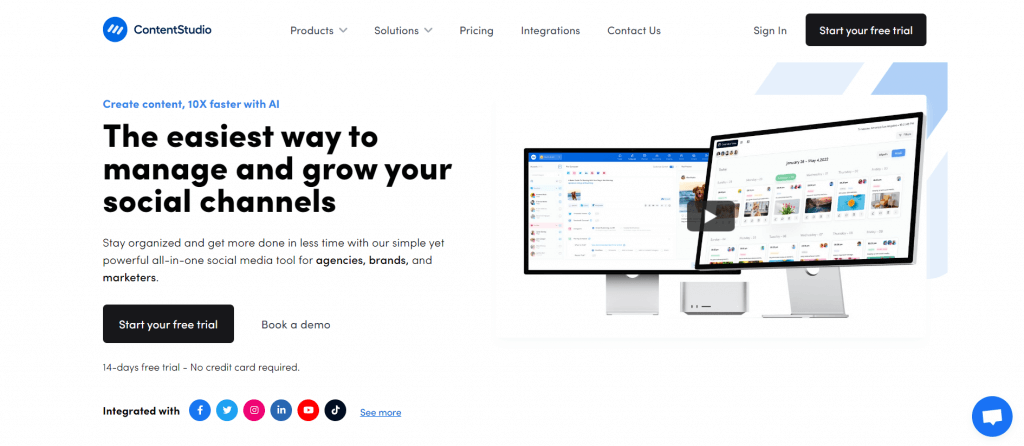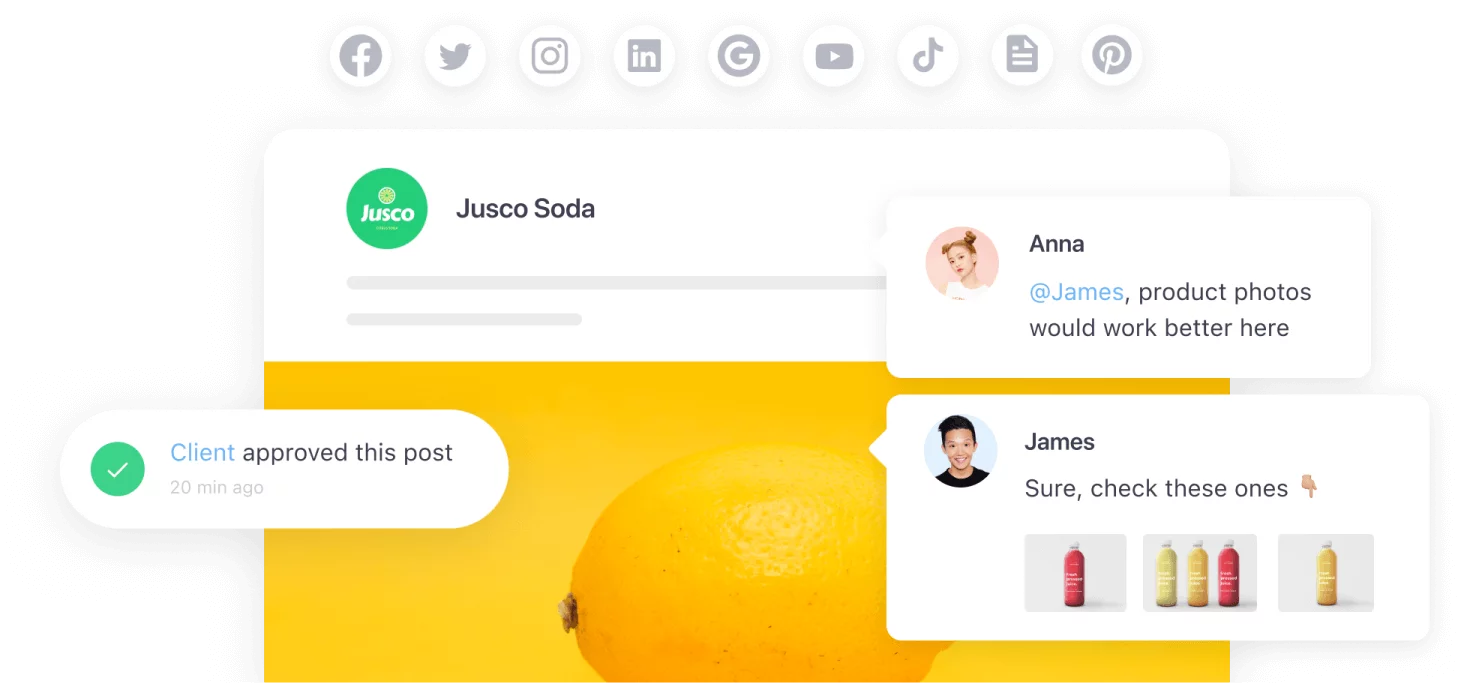Did you know that multi-channel marketing can increase engagement by over 300%? In other words, a solid content distribution strategy will put your business in the spotlight and strengthen relationships with the target audience. However, manually promoting, publishing and managing content on multiple social media platforms or other channels can be cumbersome — that’s where content distribution software comes in.
To spare you the research, I’ll cover the top content distribution platforms currently available. But first, let’s get a better look at what this software does, its main benefits, and what features you need to look for. So let’s get to it!
Contents
What is content distribution software?
Content distribution software refers to a tool designed to manage and disseminate marketing content like articles, images, and videos across multiple channels at once. This software enables content creators and marketers to easily publish, share, and promote their content to target audiences.
With features like content planning, scheduling, and audience targeting, a content distribution system simplifies the complex task of strategically delivering digital content to specific online platforms. The result is maximized reach, increased engagement, and a bigger impact on the intended audience.
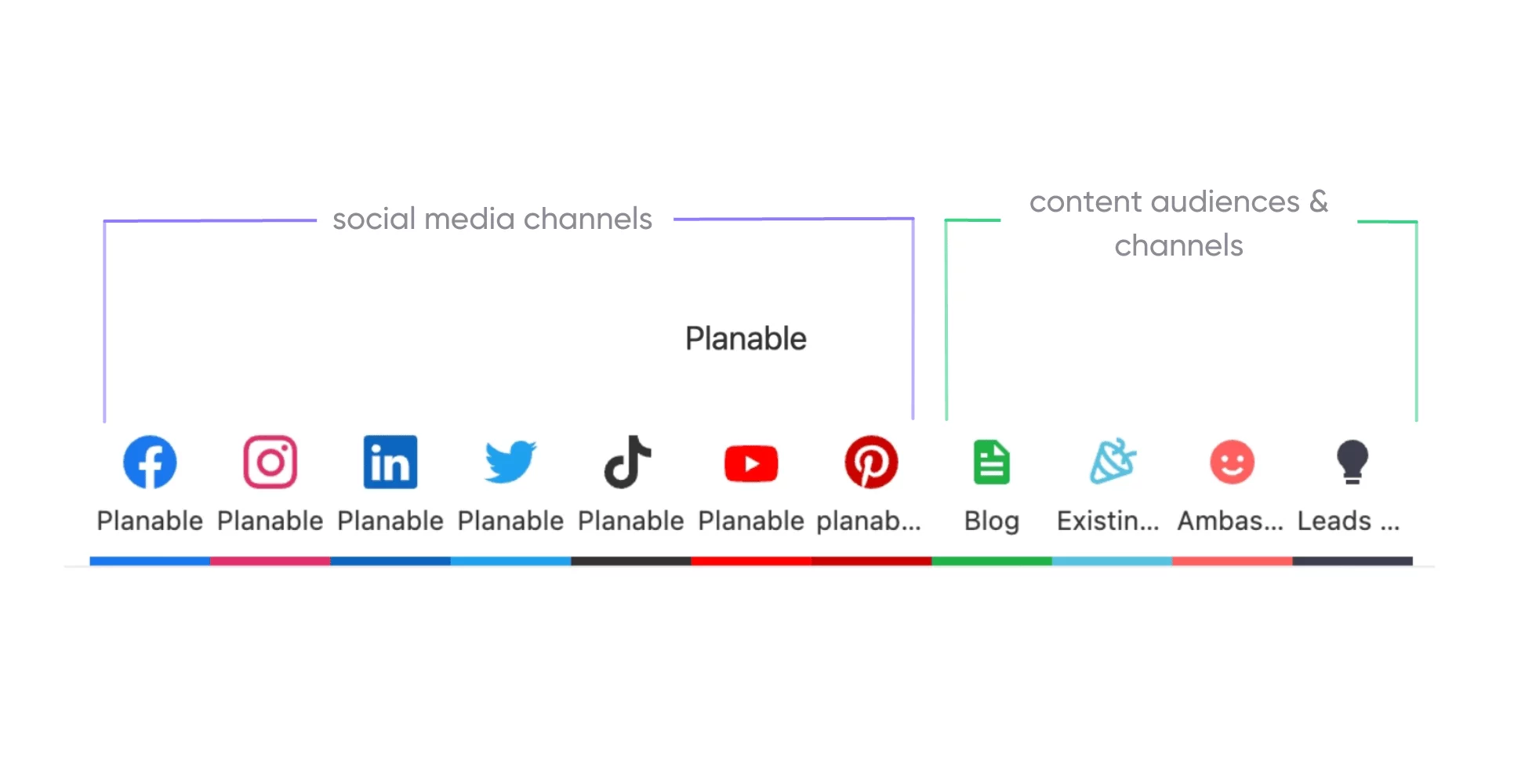
Content distribution system example
Benefits of a content distribution platform
Now that we’ve seen what a content distribution platform is and what it does, let’s get into more detail about its benefits.
- Enhanced campaign visibility
A content distribution platform allows you to easily create, manage, and publish posts across various channels — providing a unified overview of your content marketing efforts. Coupled with analytics tools, you can measure each marketing channel’s performance and identity growth opportunities.
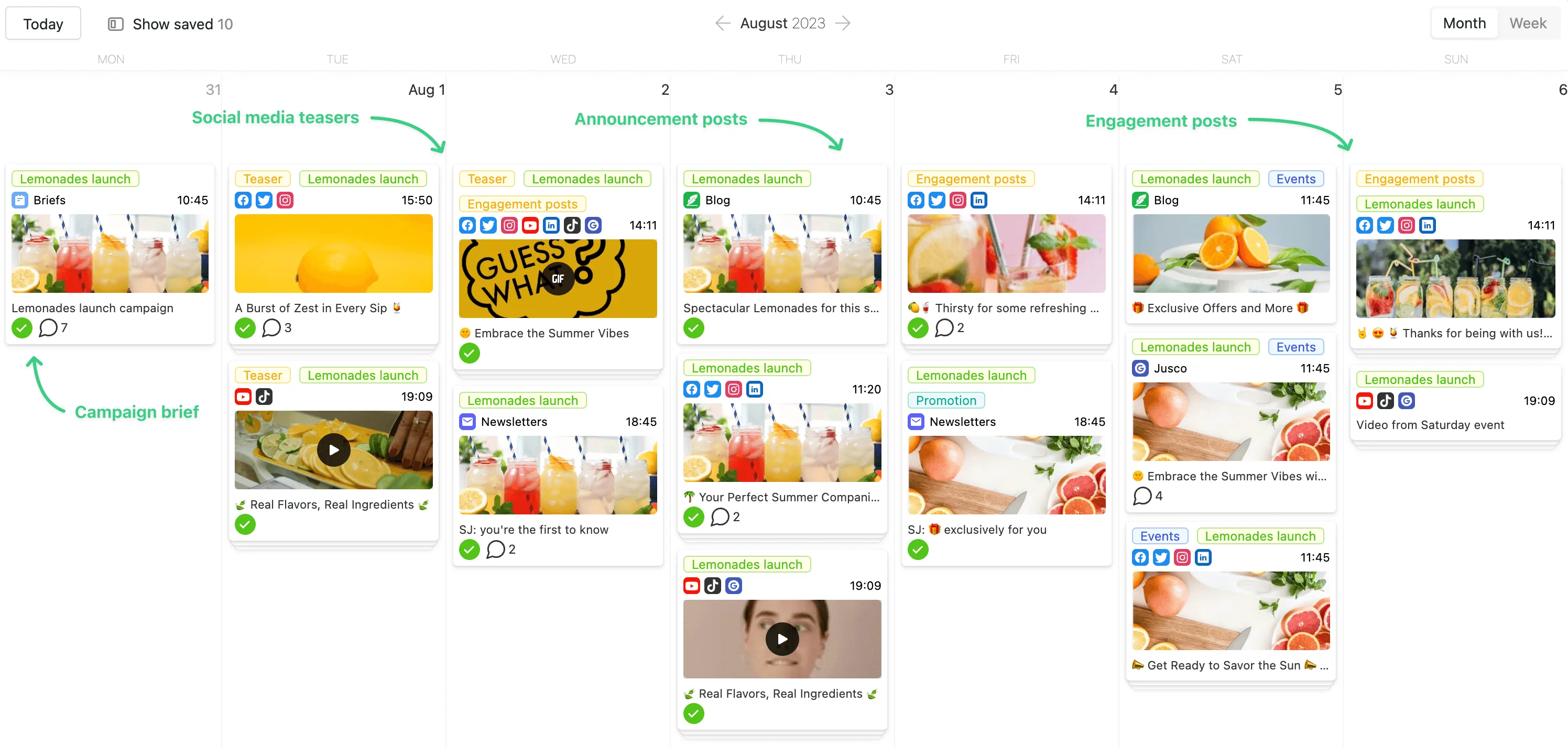
Content marketing campaign management in Planable
- Team accountability
Most content distribution tools offer built-in collaboration features, and review and approval workflows. You can easily delegate work to teammates and set up custom user permissions. This improves communication and gives you an overview of everyone involved in the content creation process, encouraging accountability among team members.
- Improved team collaboration
Some content distribution platforms allow you to easily leave feedback on posts via comments-in-context. This ensures that team members can offer and receive input on the distribution process at every stage.
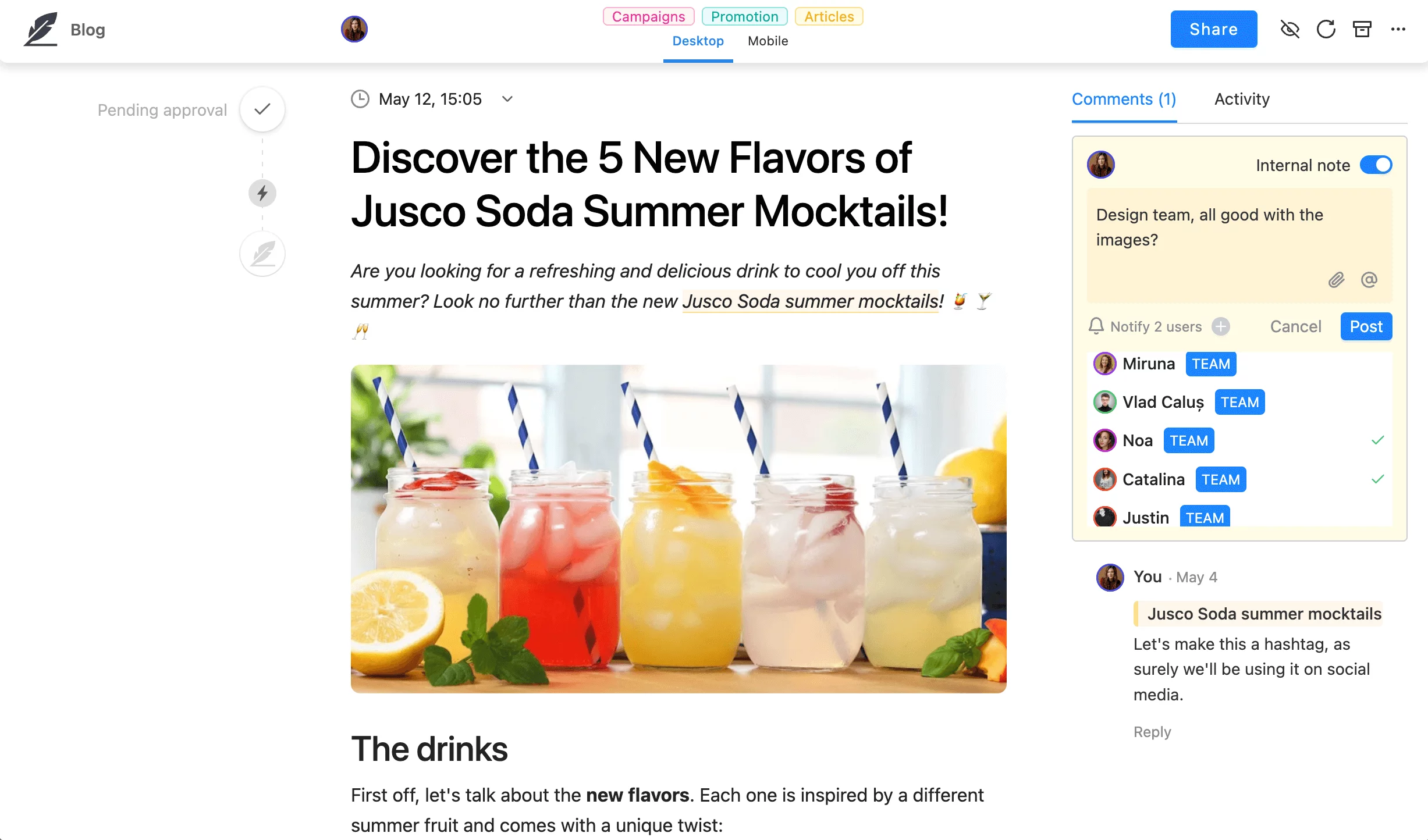
Blog post collaboration in Planable
- Streamlined content creation and publishing
Media libraries allow marketers to store and organize all the assets needed for content development, streamlining the creation process. Coupled with content calendars and bulk scheduling, you can easily publish content across multiple channels and reach a large audience.
Key features to look for in content distribution tools
There are many content distribution platforms in the market, each having different functionalities and excelling in various departments (like content planning, collaboration, analytics, etc.). However, here are a few must-have features you should look for when picking a content distribution system:
- Real-time collaboration
Creating content requires a lot of creativity and two heads are always better than one! Make sure your chosen content distribution tool facilities real-time collaboration, file sharing, and comments in context. These features allow you to easily leave feedback, get multiple members to work on the same project, and keep communication centralized.
- Multi-level approvals
Multi-step approvals involve pushing a piece of content through multiple approval stages before the final sign-off — essential for ensuring that your content rolls out error-free. For instance, your content will first need to be approved by the team leader, then by the marketing manager, while the client gets to do the final sign-off.
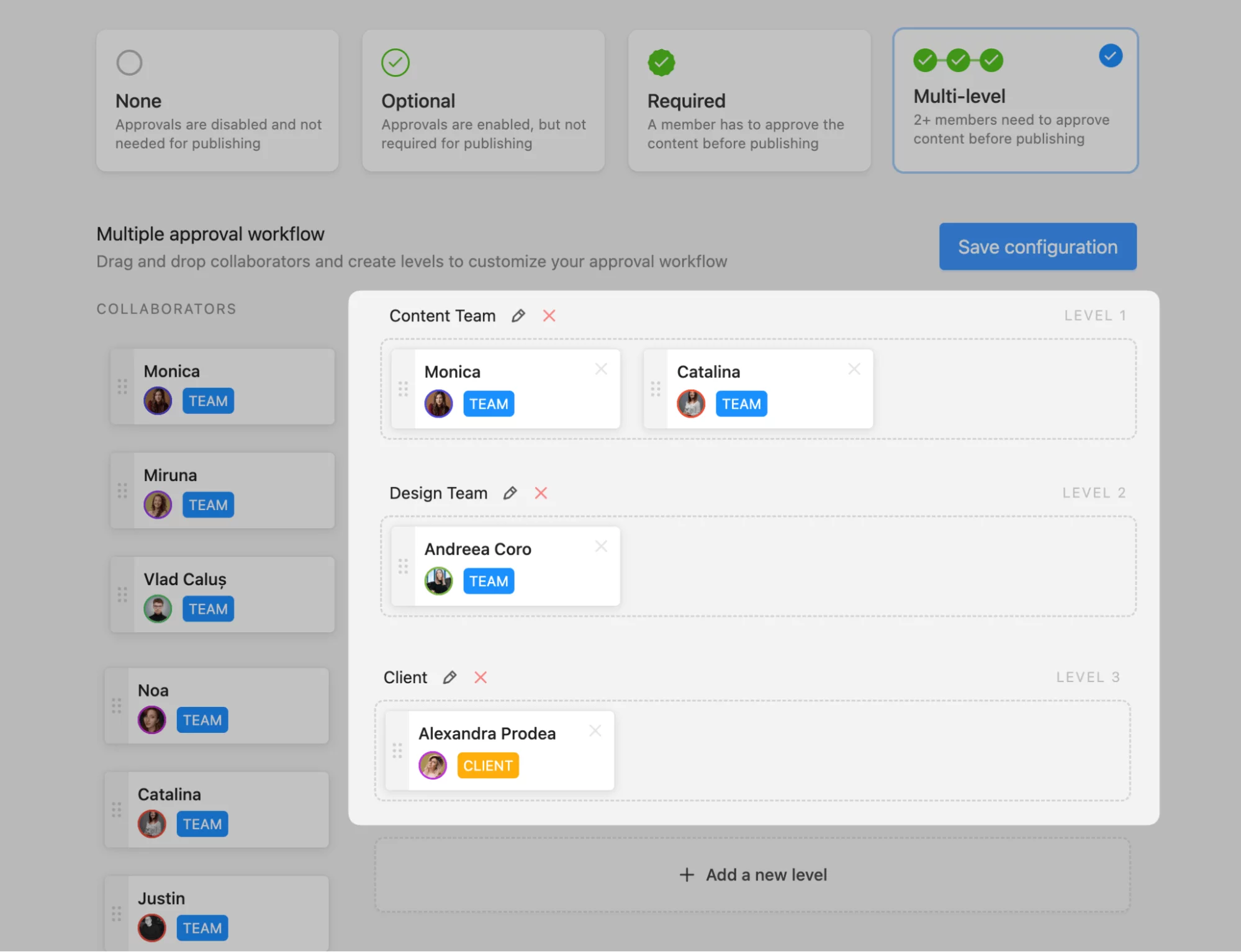
Multi-level approvals in Planable
- Content calendars
An editorial calendar allows you easily plan, visualize, and schedule upcoming posts. Look for tools that include bulk scheduling, color-coded labels, and calendar notes. These functionalities help you post content across multiple platforms simultaneously and neatly organize upcoming posts.
- Media asset libraries
A multimedia repository allow you to store and organize all the design elements needed to whip up a post (graphics, logos, videos, etc.). This functionality can boost your creative team’s productivity and make the creation process a bit faster.
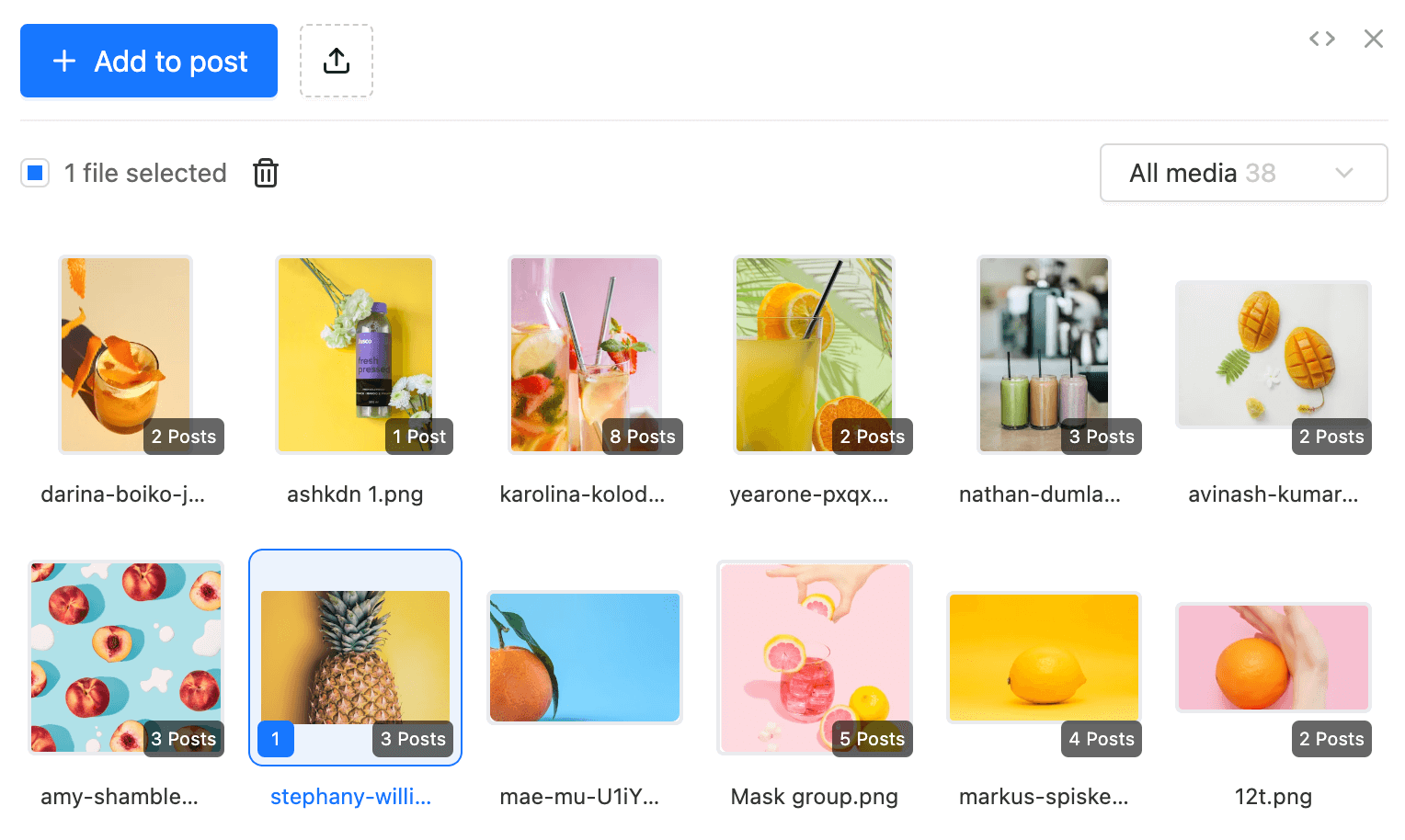
Creative assets media library in Planable
The best 8 content distribution software tools
Now that we’ve seen what content distribution software is, its must-have features, and how it can boost your overall marketing efforts, let’s go ahead and see some of the best content distribution platforms currently available. I’ll cover each tool’s pros, cons, and key features as well as show you what each platform is best for.
1. Planable: best content distribution software for collaboration and approval
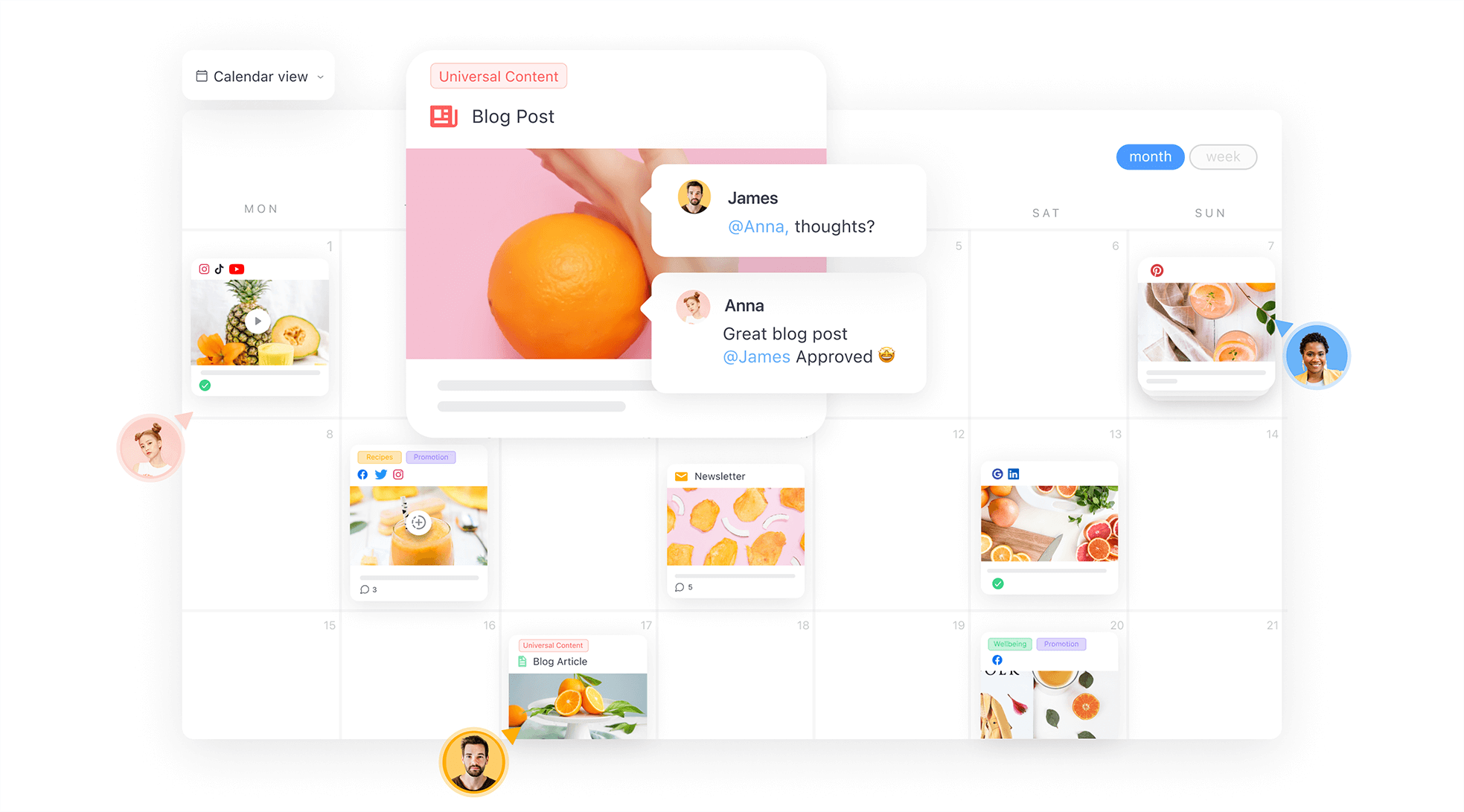
Content distribution channels organized in calendar view
Planable is a straightforward content approval, collaboration, and planning solution that allows you to collaborate and preview any type of written content you want — be it social posts, blogs, newsletters, copy for social ads, and more.
The platform stands out through its approval workflows and intuitive content calendar. Planable facilitates four types of approvals: None, optional, required, and multi-level. You can approve content with just one click directly from the calendar.
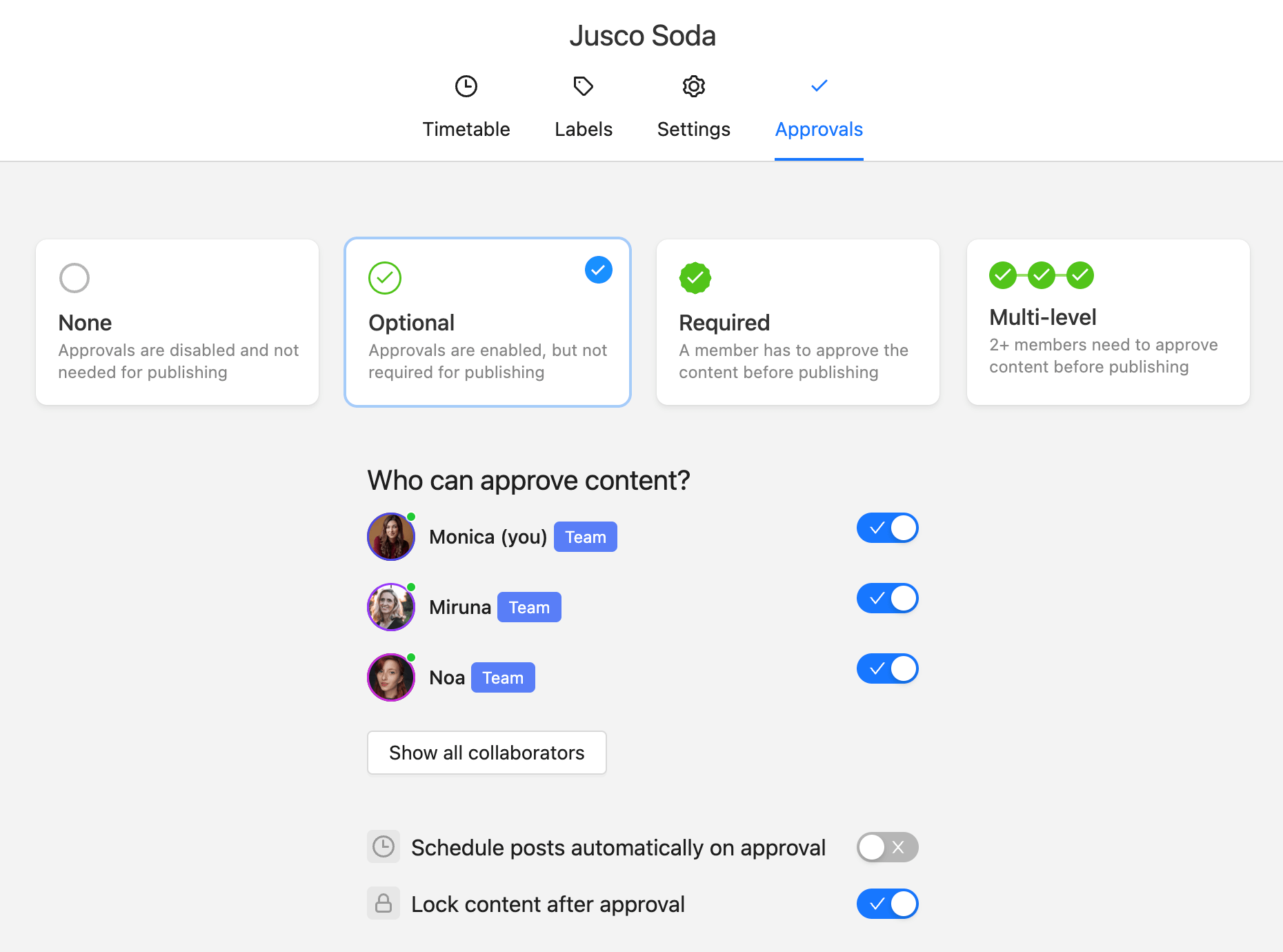
Approval levels & workflow
Speaking of which, the platform’s content calendar allows you to arrange posts via a drag-and-drop interface. From there, you can schedule posts in bulk, post the same piece of content on multiple social channels simultaneously, and organize your posts through color-coded labels. You can also quickly leave feedback through calendar notes.
Other notable features include the following:
- Real-time collaboration
Collaborate on posts with your team in real time. Leave comments next to each draft, mention team members to notify them of urgent changes, and hold behind-the-scenes conversations via internal notes (not visible to the client).
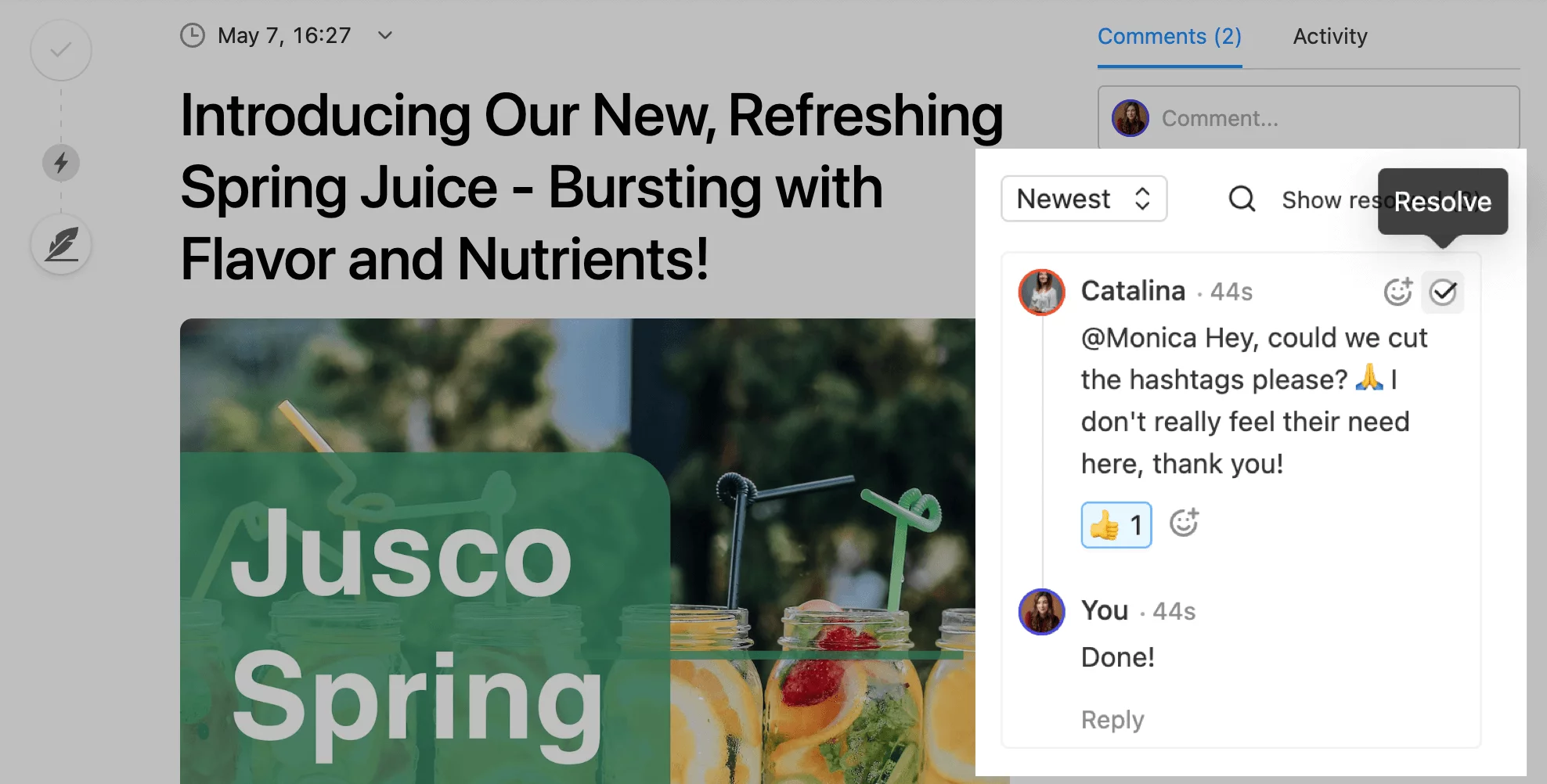
Real-time, in-context collaboration in Planable
- Media asset library
Organize all of your media files within a centralized location. Give teammates easy access to design assets and preview images, videos, and more, to see in how many posts they’ve been included.
- Guest sharing
Easily share content with external collaborators or invite them to your workspace via shareable links (no sign-in required). External collaborators can leave feedback next to each draft.
- Content synchronization
Post the same content on multiple social media accounts with Planable’s Sync Content functionality.
- Version control
Use the platform’s version history to quickly restore unwanted changes or view whether the feedback was implemented correctly.
- Analytics
See all your social media insights at a glance, spot top-performing content, and create intuitive reports for your clients or stakeholders.
Supported networks: Facebook, Instagram, LinkedIn, Twitter, Pinterest, YouTube, TikTok, and Google Business Profile.
Drawbacks: Planable doesn’t have any integrations with CMS platforms for website publishing yet.
Pricing: Paid plans start at $11/user/month (annually). Pricing depends on the number of users and workspaces you want. There’s also a free version that gives you access to all of the platform’s features and allows you to schedule up to 50 total posts. Try it out now.
2. HubSpot: best content distribution strategy tool
HubSpot can help you build and enhance your content distribution strategy through the platform’s Marketing Hub — HubSpot’s all-in-one marketing software solution. The platform stands out through its omnichannel marketing automation tool. You can build automated workflows that will help you create and run campaigns across websites, emails, paid social media ads, and more.
You can also use HubSpot to set up blogs and landing pages. Other notable features include:
- Reports and analytics: Use the platform’s reporting dashboards to track marketing campaign key performance indicators across multiple channels. Generate email reports to rack reply rates, email sending reputation, and more.
- Email marketing: Use the platform’s list segmentation, A/B testing, and email automation workflows to send targeted email campaigns to multiple groups within your audience.
- Social media management and scheduling: Schedule social media posts for Facebook, Instagram, LinkedIn, and Twitter. Define keywords and use them to identify and monitor social media consumer conversations about various topics.
Supported networks: Facebook, Instagram, LinkedIn, Twitter.
Drawbacks: Users report limited design flexibility in landing pages, while customer support may not always be helpful. The platform supports limited social media networks.
Pricing: The Marketing Hub covers a free version. Paid plans start at $18/month (annually).
3. Hootsuite: best for managing content distribution channels
Hootsuite is an all-in-one social media management platform that enables businesses to handle social listening, scheduling, reporting, advertising, and more. The platform can aid you in your content distribution efforts through its wide variety of supported social networks, content curation tools, and in-depth analytics.
Hootsuite’s entry-level plan allows you to connect up to 10 social accounts. Coupled with its bulk-scheduling tool and the ability to post the same content across multiple channels, Hootsuite is the perfect candidate for those seeking to manage various channels.
Other noteworthy features include:
- Content creation: Create and collect design assets via Hootsuite built-in stock image library and integration with Canva. Store assets in the platform’s library and optimize images via Hootsuite’s built-in editing tools.
- Reports and analytics: Compare your social media performance with your competitors’ via the platform’s competitive benchmarking. Generate side-by-side comparisons of key metrics across all your social media accounts and get posting time suggestions.
- Social media advertisement: Handle content promotion ad campaigns as well as boosted posts. Use predefined tags on your posts so you can easily analyze and compare performance.
Supported platforms: Facebook, Instagram, Twitter, LinkedIn, YouTube, TikTok, Pinterest.
Drawbacks: Unlike the other two platforms mentioned above, Hootsuite doesn’t support any channels outside social media. If you’re on the lookout for a tool supporting other channels as well, check these Hootsuite alternatives.
Pricing: Hootsuite starts at $99/month (annually, for one user).
4. Zoho: best for content creation and marketing
Zoho is a comprehensive software suite that includes solutions for customer relationship management, social media management, customer service, team collaboration, and more. Although these solutions are separate, Zoho One is an integrated system that allows you to handle multiple aspects of your business — especially content marketing and creation.
Here are some of the multiple tools Zoho One brings to the table:
- Zoho Writer: Create written content (blogs, social media copy, video scripts) with the platform’s built-in writer. Use its collaboration tools to leave comments and work on a document with your team in real-time.
- Zoho Social: Use Zoho’s social media management solution to handle content promotion and boost social media presence across any major social media platform. Monitor and engage with your target audience through Zoho Social’s message inbox and listening tools.
- Zoho Notes: Use Zoho’s note-taking tool to create content briefs or to-do lists. Easily share and collaborate on notes with teammates.
Other features include a website builder, email marketing, and more.
Supported networks: Facebook, Twitter, LinkedIn, Instagram, Pinterest, TikTok, YouTube, Google Business Profile.
Drawbacks: Zoho One includes numerous functionalities that are not necessary for content distribution (HR, finance tools, etc). As such, Zoho One won’t bring the best value for money for those strictly focusing on content marketing and creation. You can get the tools mentioned above separately.
Pricing: Pricing starts at $37/user/month (annually).
5. CoSchedule: best for content planning
Coschedule is a straightforward content planner with social and project management capabilities. The platform offers an intuitive calendar that allows you to schedule content via a drag-and-drop interface and organize upcoming posts through color-coded labels.
Some other notable features include:
- Social media management: Schedule content in bulk across most major social networks. Get posting time suggestions and use the platform’s social media analytics tools to track campaign and social profile performance.
- Content marketing: Use the email subject line tester to improve email click-through rates. Write catchy headlines and improve organic traffic with Headline Studio. Use the platform’s AI-powered writing assistant to ideate and improve content.
- Project management: Set up recurring tasks, approval workflows, and generate team performance reports. Use the Kanban view to easily visualize work and collaborate with teammates through comments or discussion threads.
Supported networks: Facebook, Instagram, LinkedIn, Twitter, Pinterest.
Drawbacks: The platform supports limited social networks compared to other tools in this list. To cut off the research for other tools that support more platforms, check out these CoSchedule alternatives.
Pricing: There’s a free version available to one user. Paid plans start at $19/user/month (annually).
6. Sprout Social: best for audience analysis
Sprout Social is a social media management solution that accentuates social monitoring and audience analytics. You can use the platform to monitor customer feedback, determine consumer sentiment regarding a specific product or topic, and uncover key details regarding your target audience (device usage, age, gender, location, etc.).
You can also use the platform Smart Social Inbox to identify influencers relevant to your niche.
Other noteworthy features include:
- Social CRM: Use the platform’s built-in CRM to track customer conversations. Access customer contact details and add internal notes so team members can provide relevant answers.
- Reports and analytics: Generate competitor, profile, post, and paid advertising performance reports across multiple channels. Evaluate team efficiency via the platform’s response rate analysis tools.
- Content scheduling: Find relevant content that’s popular with your target audience and share it on multiple networks with the Content Suggestion tool. Schedule posts in-bulk, automatically determine optimal sending times and more.
Supported networks: Instagram, Facebook, Twitter, TikTok, LinkedIn, Pinterest, YouTube.
Drawbacks: The platform does not support any other networks besides social media.
Pricing: Pricing starts at $249/month (1 user). Each additional user costs $199, $299, or $349/month based on your selected plan. If you’re looking for a more budget friendly software, check out these Sprout Social alternatives suitable for any budget.
7. SocialPilot: best for content promotion across multiple social media channels
SocialPilot is a social media management and publishing platform that helps businesses boost their social presence across multiple platforms. SocialPilot supports all major social networks while the platform’s starter plan costs $25.50/month and allows you to connect up to ten accounts.
Some notable features include:
- Content publishing: Use the RSS feed automation tool to easily share a blog post to your social account. Schedule content in bulk and set up Smart Queues (automatically post content depending on the best time to post for each specific platform).
- Content creation: Use the platform’s built-in image editor to tweak visuals before publishing. Easily add videos and GIFs while scheduling content. Use the platform’s audience targeting tool to ensure that your content reaches the right audience on Facebook.
- Reports and analytics: Generate reports via pre-existing templates or create custom reports according to your needs. Monitor audience growth patterns and identify the most active commenters, sharers, or likers. Gauge content performance and get best time to post suggestions.
Supported networks: Facebook, Instagram, Twitter, LinkedIn, Pinterest, YouTube, TikTok, Google Business Profile.
Drawbacks: The platform’s inbox management capabilities are limited to Facebook, Instagram, and Google Business Profile. The platform doesn’t facilitate social PPC advertising.
Pricing: Pricing starts at $25.50/month (annually). It includes one user and ten social accounts.
8. Content Studio: best for content curation
Content Studio is an all-in-one social media management tool that handles scheduling, analytics, and social inbox management. However, the platform shines through its content curation and influencer marketing capabilities.
You can search for influencers relevant to your brand by niche or location. You’ll get a detailed overview of each influencer’s demographics and the engagement levels they generate. You’ll also receive all the contact details necessary to get in touch with them.
Other noteworthy features include:
- Content curation: Build custom content streams to collect relevant posts according to your desired topics. Find inspirational quotes and identify the top-trending articles. Use topic tags to discover content across various niches and measure their performance.
- Content publishing: Get posting time suggestions and hashtag recommendations. Schedule recurring content and customize posts for each specific channel. Publish blogs on sites like Medium, WordPress, Webflow, and more.
- Social inbox: Reply to comments and messages from multiple networks within a single dashboard. Leave notes next to each comment and assign messages to teammates.
Supported networks: Facebook, Instagram, Twitter, LinkedIn, Google Business Profile, Pinterest, TikTok, YouTube, Tumblr, WordPress, Medium, Webflow, Shopify.
Drawbacks: Users report that the content discovery tool is tricky to use and occasionally offers irrelevant article recommendations.
Pricing: Plans start at $20/month (annually).
Content distribution software FAQs
What is an example of content distribution platforms?
Planable is an excellent example of a content distribution platform, especially in terms of approvals and collaboration.
The platform allows you to choose between multiple types of approval workflows: None, optional, required, and multi-level.
As for collaboration, you can work with teammates in real-time on any type of written content — be it a blog post, social post, or email copy, for instance.
What are 3 examples of distribution channels?
There are three types of content distribution channels: owned, earned, and paid. Owned media refers to all the marketing channels you have complete control over, like your own blog or social accounts.
Earned media represents content about your business that you haven’t paid for or created, like customer reviews or any other type of user-generated content.
Paid media refers to content promoted through paid channels, like PPC, display ads, etc.
What are the best social media channels to distribute content to?
Instagram is ideal for highly visual content like product photos or infographics. Twitter is excellent for short-form text-based posts like news updates or product launch campaigns.
Facebook is perfect for posting content that drives traffic to your website, like sharing snippets of your blog, for instance. LinkedIn works for establishing yourself as a B2B thought leader. As such, longer text-based posts regarding industry-related topics will work just fine.
Lastly, since videos typically experience higher engagement levels, TikTok is ideal for increasing brand awareness.
